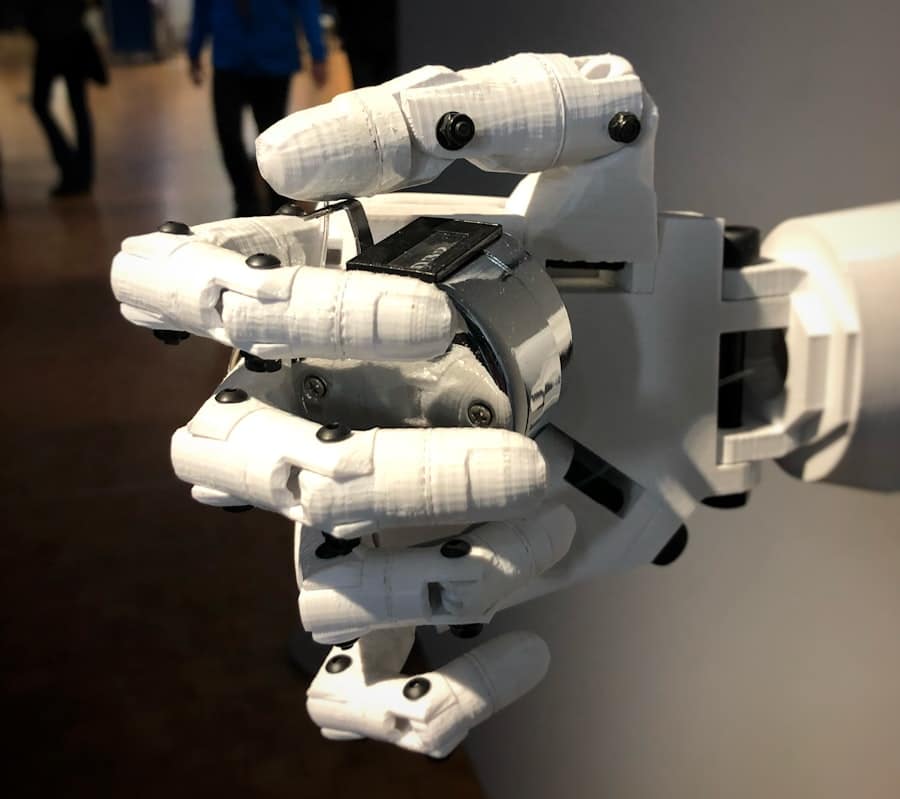The increasing volume of waste generated globally has necessitated innovative solutions to manage and process refuse efficiently. Autonomous waste sorting systems represent a significant advancement in this field, leveraging cutting-edge technology to streamline the separation of recyclable materials from general waste. These systems utilize a combination of robotics, artificial intelligence (AI), and machine learning to identify, categorize, and sort various types of waste with minimal human intervention.
As urbanization continues to rise and environmental concerns become more pressing, the implementation of autonomous waste sorting systems is emerging as a critical component in the quest for sustainable waste management. The concept of autonomous waste sorting is not merely a futuristic vision; it is already being realized in various settings around the world. These systems are designed to enhance the efficiency of recycling processes, reduce contamination rates, and ultimately contribute to a circular economy where materials are reused rather than discarded.
By automating the sorting process, these technologies can significantly reduce labor costs and improve the accuracy of material recovery, thereby addressing some of the most pressing challenges faced by traditional waste management practices.
Key Takeaways
- Autonomous waste sorting systems use advanced technology to sort and manage waste without human intervention.
- Artificial intelligence plays a crucial role in waste sorting by enabling machines to identify and sort different types of waste materials.
- The advantages of autonomous machines in waste management include increased efficiency, reduced labor costs, and improved recycling rates.
- Challenges and limitations of autonomous waste sorting systems include high initial investment, technical complexities, and the need for ongoing maintenance.
- Case studies of successful implementation of autonomous waste sorting systems demonstrate their potential to revolutionize waste management and contribute to a more sustainable future.
The Role of Artificial Intelligence in Waste Sorting
Artificial intelligence plays a pivotal role in the functionality of autonomous waste sorting systems. At the core of these systems is advanced machine learning algorithms that enable the machines to recognize and differentiate between various types of materials. For instance, AI can be trained to identify plastics, metals, paper, and organic waste through image recognition techniques.
By analyzing visual data captured by cameras and sensors, these systems can make real-time decisions about how to sort each item based on its material composition. Moreover, AI enhances the adaptability of waste sorting systems. As these machines process more data over time, they become increasingly proficient at recognizing new types of materials and variations in waste composition.
This continuous learning capability allows for improved accuracy in sorting, which is crucial in reducing contamination rates in recycling streams. For example, if a new type of biodegradable plastic enters the market, an AI-driven system can be updated with this information, allowing it to identify and sort these materials correctly without requiring extensive reprogramming.
Advantages of Autonomous Machines in Waste Management

The advantages of implementing autonomous machines in waste management are manifold.
Traditional sorting methods often rely on manual labor, which can be slow and prone to human error.
Autonomous systems can operate continuously without fatigue, significantly increasing throughput rates. For instance, while a human worker might sort a few hundred items per hour, an autonomous system can process thousands, leading to faster turnaround times for recycling facilities. In addition to efficiency, autonomous waste sorting systems also contribute to improved safety for workers.
Manual sorting can expose employees to hazardous materials and unpleasant working conditions. By automating this process, companies can minimize the risk of injury and create a safer work environment. Furthermore, these systems can be designed to handle hazardous waste more effectively than human workers, ensuring that such materials are processed according to safety regulations.
Challenges and Limitations of Autonomous Waste Sorting Systems
Despite their numerous advantages, autonomous waste sorting systems face several challenges and limitations that must be addressed for widespread adoption. One significant hurdle is the initial investment required for implementing these technologies. The cost of advanced robotics, AI software, and necessary infrastructure can be substantial, making it difficult for smaller waste management companies to adopt these systems.
Additionally, ongoing maintenance and updates are essential to keep the technology functioning optimally, which can further strain budgets. Another challenge lies in the variability of waste streams. Waste composition can differ significantly based on geographic location, seasonality, and consumer behavior.
This variability can complicate the training of AI algorithms, as they must be exposed to diverse datasets to learn effectively. If a system is primarily trained on one type of waste stream but deployed in an area with different materials, its sorting accuracy may suffer. Addressing this issue requires continuous data collection and algorithm refinement to ensure that autonomous systems remain effective across various contexts.
Case Studies of Successful Implementation of Autonomous Waste Sorting Systems
Several case studies illustrate the successful implementation of autonomous waste sorting systems across different regions and contexts. One notable example is the use of robotic sorting technology at a recycling facility in San Francisco, California. This facility employs robotic arms equipped with AI-driven vision systems that can identify and sort recyclables with remarkable precision.
The integration of these robots has led to a significant increase in recycling rates while reducing contamination levels in the sorted materials. Another compelling case study comes from Sweden, where a waste management company has deployed autonomous sorting machines in its operations. These machines utilize advanced sensors and AI algorithms to sort mixed waste into various categories efficiently.
The results have been impressive; not only has the company seen an increase in the volume of recyclables processed, but it has also reduced operational costs associated with manual sorting labor. This success has prompted other companies in Europe to explore similar technologies as they seek to enhance their waste management practices.
Future Developments and Innovations in Autonomous Waste Sorting Technology

The future of autonomous waste sorting technology is poised for significant advancements as research and development continue to evolve. One area of innovation is the integration of more sophisticated AI algorithms that can improve recognition capabilities even further. For instance, deep learning techniques could enable machines to analyze not just visual data but also contextual information about waste items based on their packaging or historical data about consumer behavior.
Additionally, advancements in sensor technology will likely enhance the capabilities of autonomous sorting systems. The incorporation of multispectral imaging or hyperspectral sensors could allow machines to identify materials based on their chemical composition rather than just visual characteristics. This would enable more accurate sorting of complex materials that may not be easily distinguishable by sight alone.
Environmental Impact of Autonomous Waste Sorting Systems
The environmental impact of autonomous waste sorting systems is profound and multifaceted. By improving recycling rates and reducing contamination levels, these systems contribute directly to decreasing landfill waste and promoting resource recovery. For instance, when recyclables are sorted accurately, they can be reprocessed into new products rather than being sent to landfills where they contribute to greenhouse gas emissions.
Moreover, autonomous waste sorting systems support the principles of a circular economy by facilitating the reuse of materials. When resources are recovered efficiently through advanced sorting technologies, they can be reintegrated into production cycles, reducing the need for virgin materials and minimizing environmental degradation associated with resource extraction. This shift not only conserves natural resources but also lowers energy consumption and emissions associated with manufacturing processes.
The Potential of Autonomous Machines in Revolutionizing Waste Management
The potential for autonomous machines to revolutionize waste management is immense. As cities grapple with increasing waste generation and environmental challenges, these technologies offer a pathway toward more efficient and sustainable practices. By harnessing the power of artificial intelligence and robotics, autonomous waste sorting systems can transform how we approach recycling and resource recovery.
As advancements continue in this field, it is essential for stakeholders—ranging from policymakers to industry leaders—to collaborate on developing frameworks that support the integration of these technologies into existing waste management infrastructures. With continued investment in research and development, coupled with a commitment to sustainability, autonomous waste sorting systems could play a pivotal role in shaping a cleaner and more sustainable future for our planet.
In the realm of technological advancements, the integration of autonomous machines in waste sorting systems is a significant step towards efficient waste management. These systems utilize artificial intelligence to sort and process waste, reducing human error and increasing recycling rates. For students interested in exploring how technology can be applied in various fields, including environmental management, having the right tools for research and study is crucial. An article that might be of interest is The Best Tablets for Students in 2023, which provides insights into the best devices that can aid in academic pursuits, including those related to environmental studies and technology.
FAQs
What are autonomous machines in waste sorting systems?
Autonomous machines in waste sorting systems are robotic systems that use artificial intelligence and machine learning to identify and sort different types of waste materials without human intervention.
How do autonomous machines manage waste sorting systems?
Autonomous machines manage waste sorting systems by using sensors and cameras to identify different types of waste materials, such as plastics, metals, and paper. They then use robotic arms and other mechanical devices to separate and sort the materials into designated bins or containers.
What are the benefits of using autonomous machines in waste sorting systems?
The benefits of using autonomous machines in waste sorting systems include increased efficiency, improved accuracy in sorting materials, reduced labor costs, and the ability to handle a larger volume of waste materials.
Are autonomous machines in waste sorting systems environmentally friendly?
Yes, autonomous machines in waste sorting systems can contribute to environmental sustainability by improving the recycling process and reducing the amount of waste that ends up in landfills. By accurately sorting materials, these machines help increase the recycling rate and reduce the environmental impact of waste disposal.
What are the challenges of implementing autonomous machines in waste sorting systems?
Challenges of implementing autonomous machines in waste sorting systems include the initial investment cost, the need for regular maintenance and technical support, and potential issues with adapting the technology to different types of waste materials and sorting processes. Additionally, there may be concerns about job displacement for human workers in the waste management industry.

